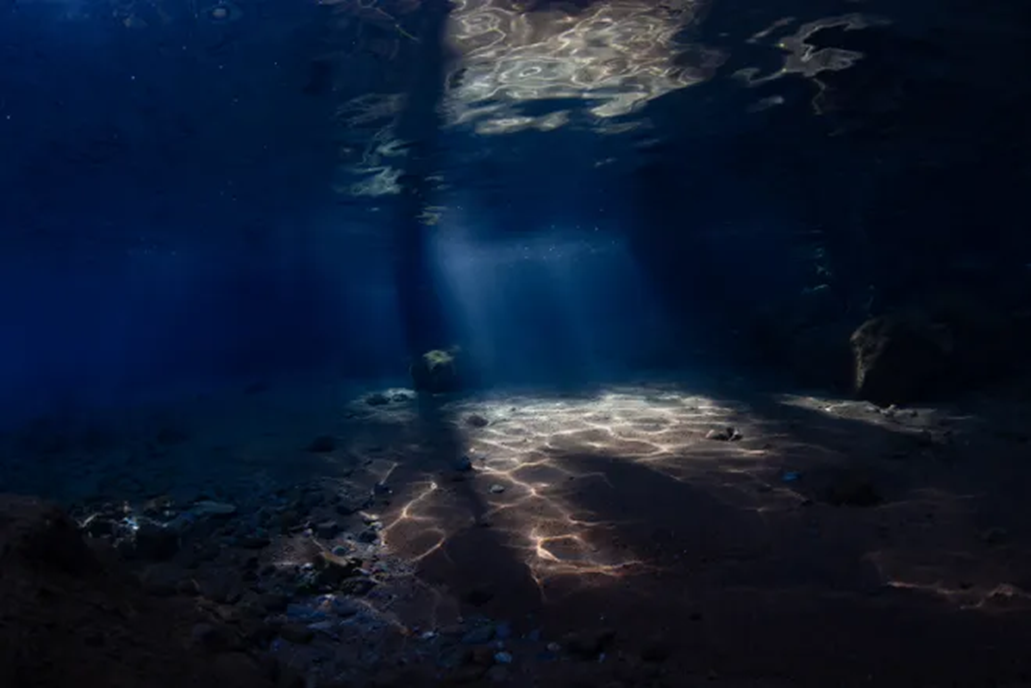- Courses
- GS Full Course 1 Year
- GS Full Course 2 Year
- GS Full Course 3 Year
- GS Full Course Till Selection
- Answer Alpha: Mains 2025 Mentorship
- MEP (Mains Enrichment Programme) Data, Facts
- Essay Target – 150+ Marks
- Online Program
- GS Recorded Course
- Polity
- Geography
- Economy
- Ancient, Medieval and Art & Culture AMAC
- Modern India, Post Independence & World History
- Environment
- Governance
- Science & Technology
- International Relations and Internal Security
- Disaster Management
- Ethics
- NCERT Current Affairs
- Indian Society and Social Issue
- NCERT- Science and Technology
- NCERT - Geography
- NCERT - Ancient History
- NCERT- World History
- NCERT Modern History
- CSAT
- 5 LAYERED ARJUNA Mentorship
- Public Administration Optional
- ABOUT US
- OUR TOPPERS
- TEST SERIES
- FREE STUDY MATERIAL
- VIDEOS
- CONTACT US
Dark Oxygen on Ocean Floor
Dark Oxygen on Ocean Floor
27-07-2024

Ground-breaking study discovers oxygen production in complete darkness, 13,000 feet below ocean surface
Key Points:
- Discovery of "Dark Oxygen": A recent study published in Nature Geoscience has found that oxygen is being produced in complete darkness, nearly 4,000 meters or 13,100 feet below the ocean surface.
- Defies Scientific Consensus: This discovery challenges the general scientific consensus that oxygen is produced via photosynthesis, which requires sunlight.
- Source of Oxygen: The study suggests that oxygen is being produced by metallic "nodules" that are similar in resemblance to lumps of coal, which split H2O molecules into hydrogen and oxygen.
- Implications: This finding has significant implications for our understanding of how life began on Earth and raises questions about the origins of aerobic life.
- Aerobic Life: The discovery of "dark oxygen" suggests that aerobic life could have begun in the deep sea, where there is no light, challenging the current understanding of how life emerged on Earth.
- Location: The study was conducted in the Clarion-Clipperton Zone, an area that is a potential target for the mining of metal-rich nodules.
- Previous Incidents: Researchers studying sea-floor ecosystems in the Clarion-Clipperton Zone noticed a similar phenomenon in 2013, but it was initially ignored.
- Mining of Metal-Rich Nodules: The study highlights the need to reconsider the mining of metal-rich nodules, which are effectively "batteries in a rock", and could have significant implications for the environment.
|
Background:
- Oceanic Oxygen Production: According to the National Oceanic and Atmospheric Administration (NOAA), around half of the Earth's oxygen comes from the ocean.
- Photosynthesis: Oceanic plankton, drifting plants, algae, and some bacteria are the primary elements attributed to the production of oxygen in the ocean, all of which require sunlight for photosynthesis.
- Importance of Oxygen: Oxygen is essential for life on Earth, and its production is a critical component of the planet's ecosystem.
Future Implications:
- Revisiting Questions: The discovery of "dark oxygen" raises questions about the origins of aerobic life and challenges the current understanding of how life emerged on Earth.
- Further Research: Further research is needed to fully understand the implications of this phenomenon and its potential impact on our understanding of the Earth's ecosystem.
- Environmental Implications: The study highlights the need to consider the environmental implications of mining metal-rich nodules and the potential impact on the deep-sea ecosystem.
Conclusion: The discovery of "dark oxygen" in the deep sea is a ground-breaking finding that challenges our current understanding of oxygen production and the origins of aerobic life. Further research is needed to fully understand the implications of this phenomenon and its potential impact on our understanding of the Earth's ecosystem.
Must Check: Best IAS Coaching In Delhi
UPSC Prelims Result 2024 Out: Expected Cut Off & Other Details, UPSC Prelims 2024 Answer with Explanation, Daily Prelims Quiz, Daily Current Affairs, MONTHLY CURRENT AFFAIRS TOTAL (CAT) MAGAZINE, Best IAS Coaching Institute in Karol Bagh, Best IAS Coaching Institute in Delhi, Daily Mains Question Answer Practice, ENSURE IAS UPSC Toppers, UPSC Toppers Marksheet, Previous Year Interview Questions, UPSC Syllabus




